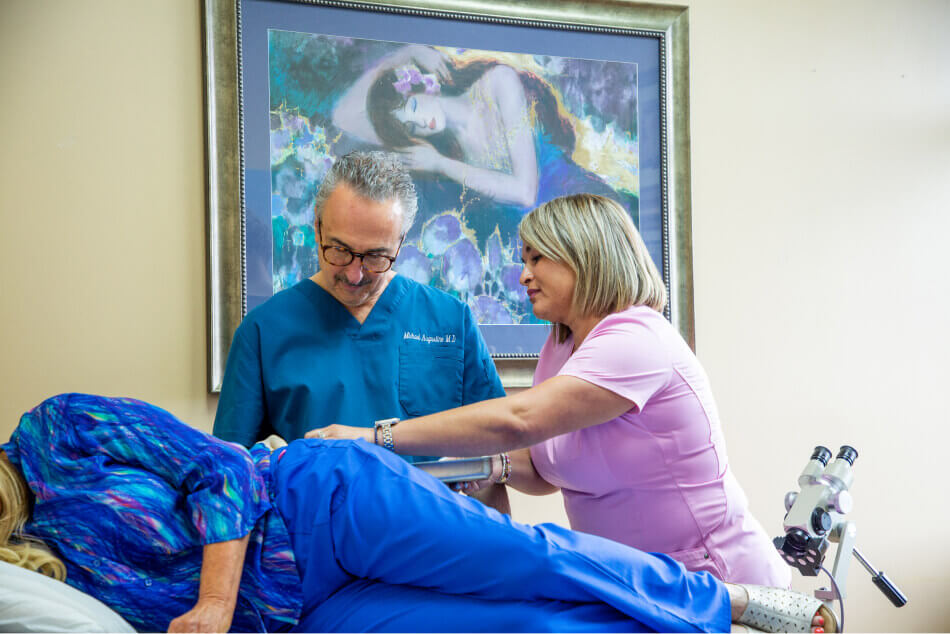Hormone replacement therapy (HRT) has emerged as an effective treatment option for individuals experiencing hormonal imbalances or deficiencies. HRT aims to restore hormonal equilibrium, alleviate symptoms, and enhance overall well-being. In this post, we will delve into the mechanisms of hormone replacement therapy and focus on the process of inserting hormone pellets into the buttocks.
Understanding Hormone Replacement Therapy:
Hormone replacement therapy involves supplementing or replacing hormones that decline with age or due to specific medical conditions. It primarily focuses on replacing estrogen and testosterone in both women and men. These hormones play crucial roles in various bodily functions, including reproductive health, bone density, cardiovascular health, and mood regulation.
HRT methods include oral medications, patches, creams, gels, injections, and hormone pellets. While each method has its advantages, hormone pellets offer unique benefits in terms of convenience, sustained release, and consistent hormone levels.
Hormone Pellet Insertion Process:
Pellet therapy involves the subcutaneous insertion of hormone pellets, typically in the fatty tissue of the buttocks. This procedure is minimally invasive and performed in a clinical setting by a trained healthcare professional. Let’s explore the steps involved in the pellet insertion process:
Consultation and Assessment:
Before undergoing hormone pellet therapy, individuals must consult with a healthcare provider specializing in hormone replacement. This initial consultation allows the healthcare provider to evaluate the patient’s medical history, symptoms, hormone levels, and overall health.
Customized Treatment Plan:
Based on the assessment, the healthcare provider will develop a personalized treatment plan tailored to the individual’s specific hormone requirements. The dosage and hormone combination will be determined based on the patient’s unique needs.
Pellet Insertion Procedure:
On the day of the procedure, the patient will be guided to a comfortable treatment room. The area of insertion, usually the upper buttocks, is cleansed with an antiseptic solution to minimize the risk of infection.
Local Anesthesia:
To ensure a painless and comfortable experience, local anesthesia is administered to numb the insertion site. This helps reduce any potential discomfort during the procedure.
Incision and Pellet Placement:
A small incision is made in the skin using a specialized instrument. Through this incision, a trocar, a thin hollow tube, is inserted into the fatty tissue. The trocar provides a pathway for the pellets to be placed accurately.
Pellet Insertion:
Using sterile forceps, the hormone pellets, which are typically about the size of a grain of rice, are carefully inserted into the trocar. The number of pellets inserted may vary depending on the specific treatment plan. Once the pellets are in place, the trocar is gently removed.
Wound Closure:
After the pellets have been inserted, the incision is closed with a sterile adhesive strip or with sutures. The wound is then covered with a sterile dressing to protect it as it heals.
Post-Procedure Care:
Following the pellet insertion, patients are provided with detailed instructions for aftercare. This may include recommendations regarding physical activity, avoiding excessive pressure on the insertion site, and monitoring for any signs of infection or complications.
Hormone replacement therapy, including pellet insertion, has emerged as an effective treatment option for individuals seeking to restore hormonal balance and alleviate symptoms associated with hormonal deficiencies. The procedure, performed by healthcare professionals in a clinical setting, involves the subcutaneous insertion of hormone pellets into the buttocks. By adhering to personalized treatment plans and post-procedure care guidelines, patients can experience the benefits of hormone replacement therapy and enhance their overall well-being.







